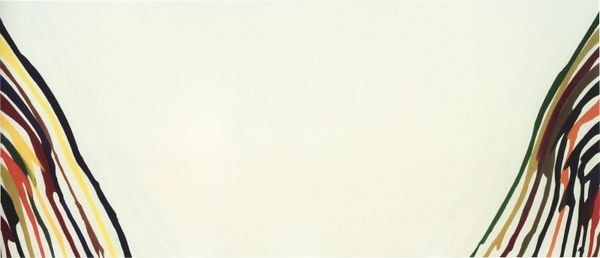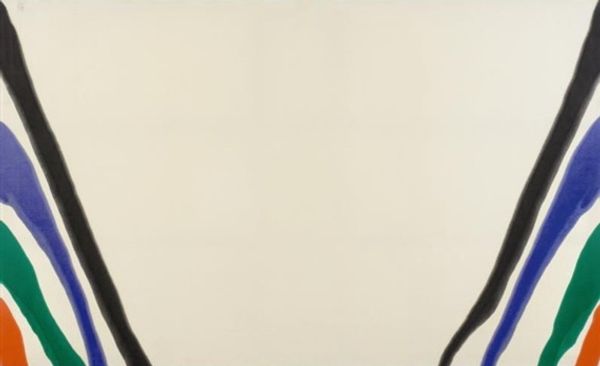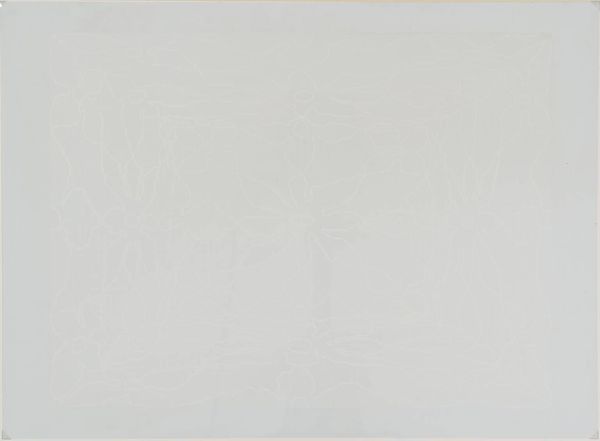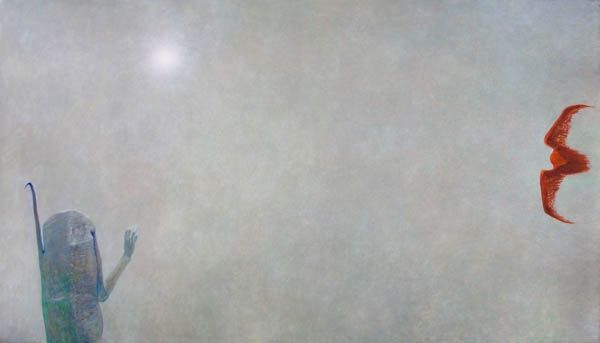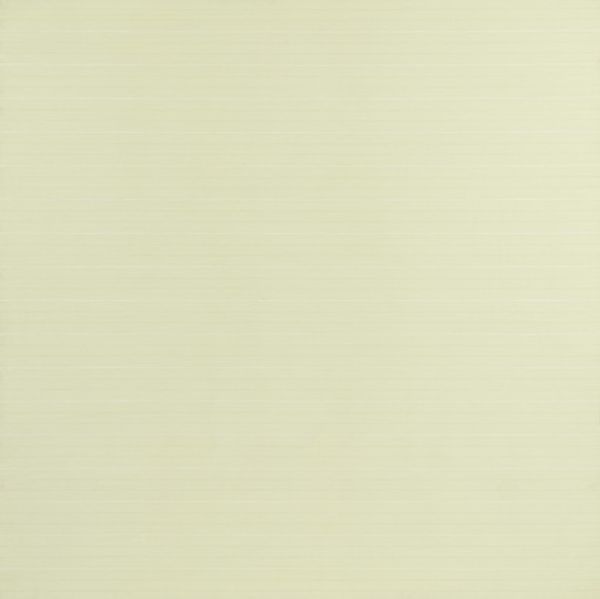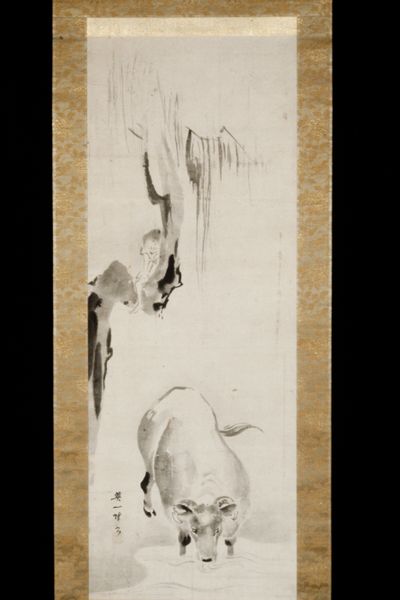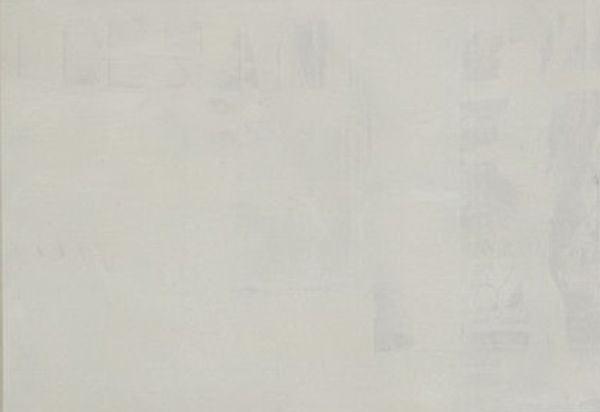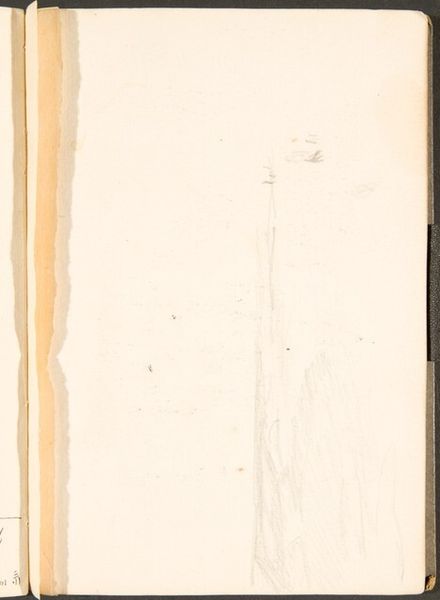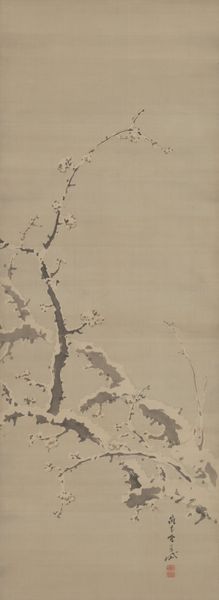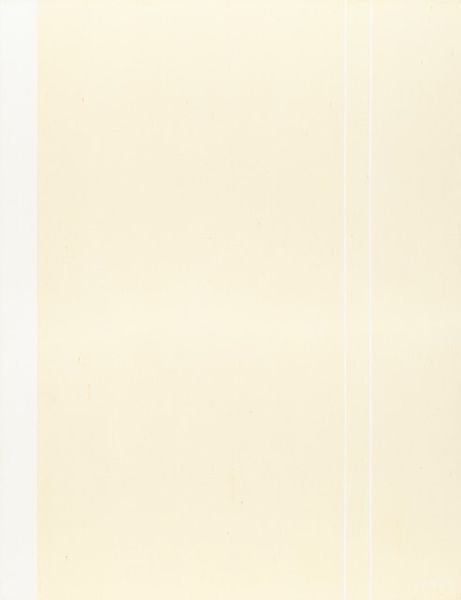
Gyrfalcon Hunting an Egret in Snow c. early 18th century
0:00
0:00
color-on-silk, paper, hanging-scroll, ink
#
animal
#
color-on-silk
#
asian-art
#
landscape
#
ukiyo-e
#
japan
#
figuration
#
paper
#
hanging-scroll
#
ink
Dimensions: 43 7/16 × 12 3/4 in. (110.33 × 32.39 cm) (image)
Copyright: Public Domain
Ohara Keizan captured this dramatic scene of a gyrfalcon hunting an egret in snow with ink and color on silk. The stark contrast between the pure white birds against a muted background immediately draws us into a world of primal struggle. The gyrfalcon, a symbol of power and nobility, dives with lethal precision, embodying the raw energy and dominance found in the natural order. We see echoes of this symbol in ancient Egyptian falcon-headed gods, avatars of divine kingship and authority. Meanwhile, the egret, traditionally associated with purity and grace, finds itself in a desperate struggle for survival. Observe how this struggle transcends time and culture, recurring in mythologies and folklore worldwide. This image speaks to our own subconscious understanding of predator and prey—a timeless drama that evokes both admiration and a primal fear.
Comments
minneapolisinstituteofart almost 2 years ago
⋮
Takagari, or Japanese falconry, was an activity of the noble class which can be traced back to the haniwa clay figures of the Kofun period (250–600). As a symbol of nobility and warrior spirit, it developed a great popularity among the warrior class and was often represented in the paintings they patronized. Ohara Keizan worked in Nagasaki, the only place where foreigners such as Chinese and Dutch people were allowed in Japan during the Edo period. Here various styles of painting were born, as different influences were blended. Around 1700, Keizan was appointed kara-e mekiki “connoisseur of Chinese art objects,” a position which required an extensive knowledge of Chinese art. We can see in this painting the influence of intaiga or “painting in the academy style,” originated by the Northern Song academy which created a highly colored and naturalistic mode of rendering bird-and-flower subjects. Each feather is carefully depicted, and the gyrfalcon is shown plunging while the egret tries to escape the attack by flying towards the viewer. Yet the gyrfalcon and the grasses are seen from the same lateral point of view, and the background flattens the perspective, thereby creating more than a dramatic moment, the painting reflects a sense of timelessness.
Join the conversation
Join millions of artists and users on Artera today and experience the ultimate creative platform.

